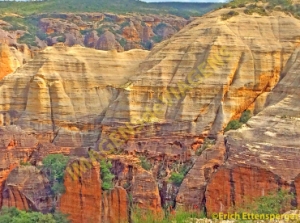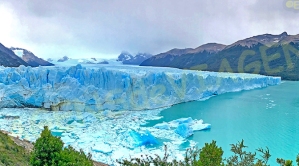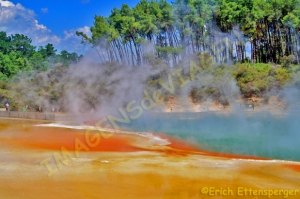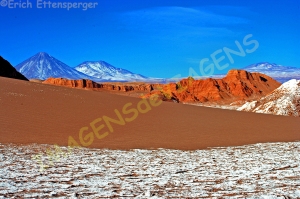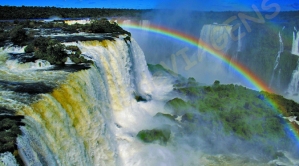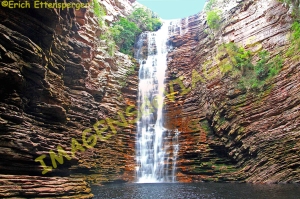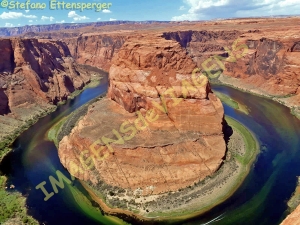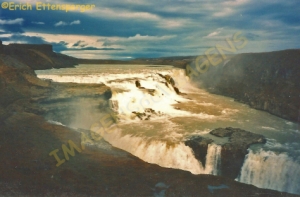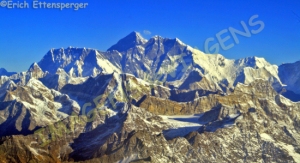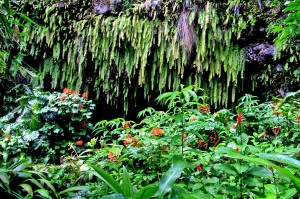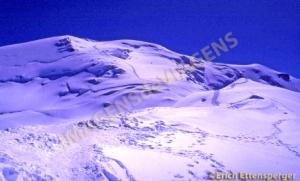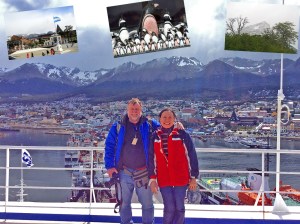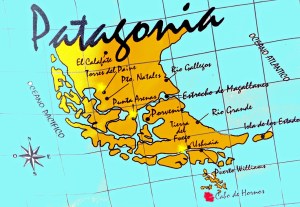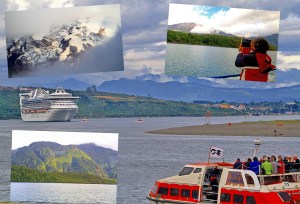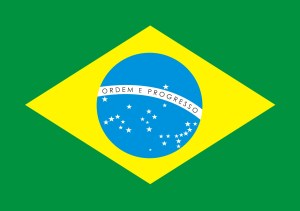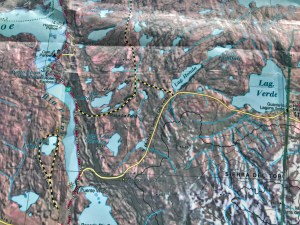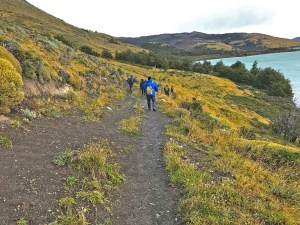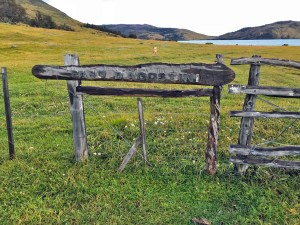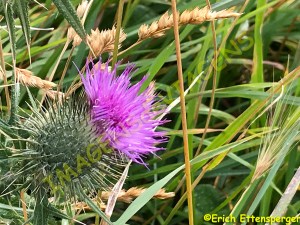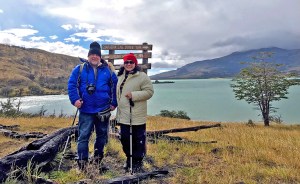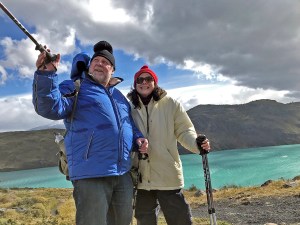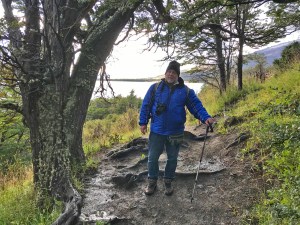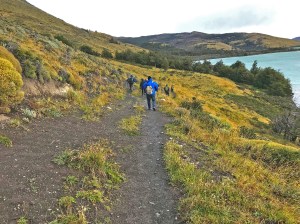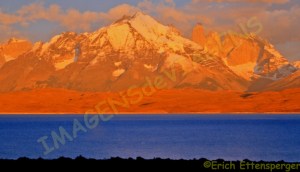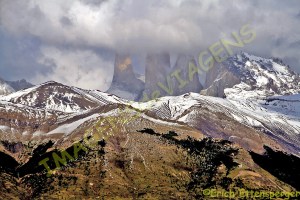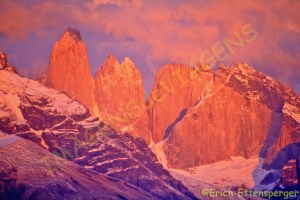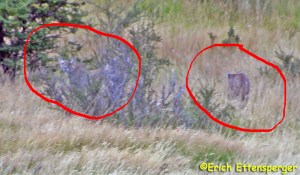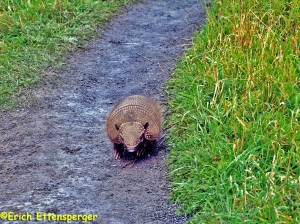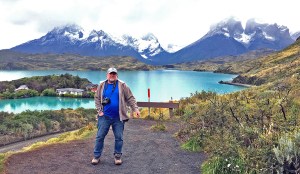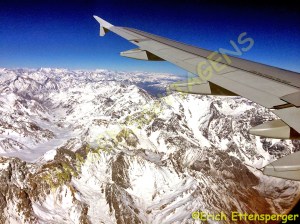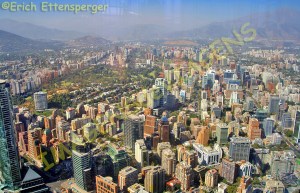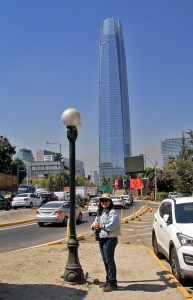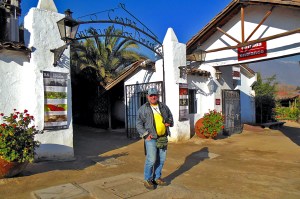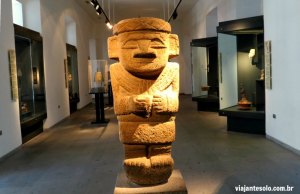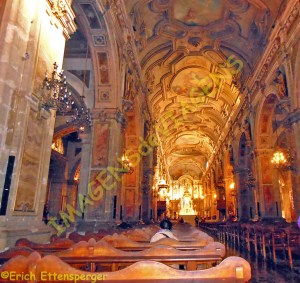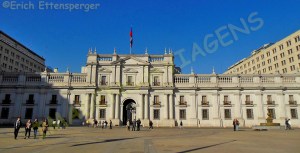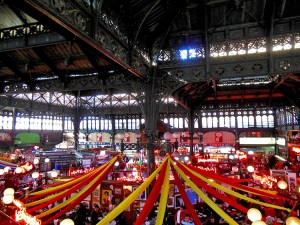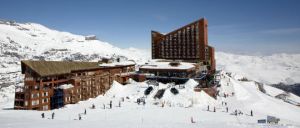
TIERRA PATAGÔNIA, LUGAR MÁGICO (PARTE II)
Continuamos a comentar sobre o hotel Tierra Patagônia, assunto do nosso post anterior. Nesse texto comentaremos sobre os cinco dias e quatro noites que passamos lá, no sistema pensão completa, onde estão incluídos os passeios para visitar a região (o passeio de barco é pago por fora, pois é terceirizado) e os traslados entre a cidade de Calafate, na Argentina e o hotel e o hotel e Punta Arenas, no Chile, de onde partimos para Santiago.
NOSSA EXPERIÊNCIA NO TIERRA PATAGÔNICA
A nossa experiência no Tierra Patagônia começou a partir do momento em que a van do traslado chegou pontualmente no hotel em Calafate onde estávamos hospedados. A partir daí, posso dizer, que terminaram nossas preocupações e tudo foi conduzido pelo experiente funcionário, que nos orientou sobre os procedimentos a seguir na fronteira entre Argentina e Chile. Nesse momento, já sentimos o carinho do hotel pelo hóspede quando nos foi ofertada uma bolsa com água e informações sobre o percurso. A distância entre Calafate, localizada na província de Santa Cruz, na Argentina até ao hotel é de, aproximadamente, 246 km. Saímos às 8:30 horas da manhã e chegamos no hotel por volta das 13:25 horas.
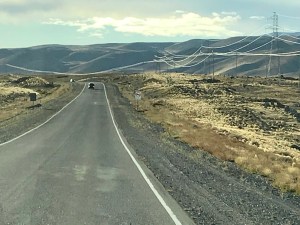

A recepção foi simpática, de forma rápida nos foi pedido para assinar a ficha de hóspedes e um termo de responsabilidade onde estava escrito sobre as condições dos passeios, os riscos e as questões de responsabilidade dos hóspedes e do hotel. Além disso, foi feita uma apresentação do hotel
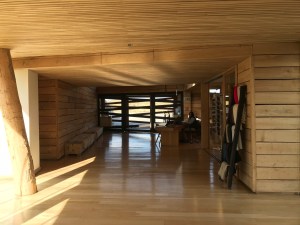

para que pudéssemos ter uma orientação geral. Depois disso, seguimos para nosso apartamento
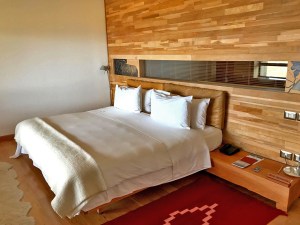


onde foram explicados alguns detalhes e foi enfatizada a preocupação do hotel na questão da sustentabilidade, recebemos dois squeezes metálicos para utilizarmos durante nossos passeios e nos foi informado sobre o bebedouro localizado na entrada do hotel.
Depois de acomodados, nos dirigimos para a área de estar, onde está localizada a mesa de atendimento sobre as excursões,

onde nos foi explicado detalhes sobre as opções de passeios oferecidas pelo hotel, pois já havíamos escolhido antecipadamente as três excursões que gostaríamos de conhecer.Escolhemos o passeio de meio dia para visitar a Lagoa Azul e arredores,

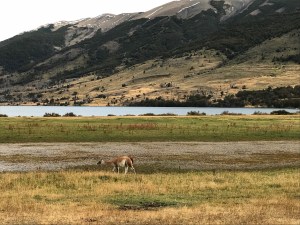
o de um dia completo para ver o Maciço Paine juntamente com o passeio de barco no Lago Grey para ver o Glacier Grey

e por último, a trilha Paso de Agostini, que nos ofereceu a oportunidade de caminhar em uma área de floresta do Parque Nacional Torre del Paine e conhecer muitas espécies vegetais, além de apreciar belas paisagens.

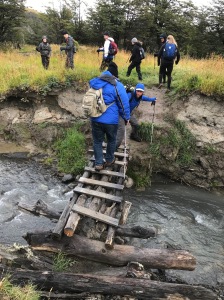
O hotel oferece uma variedade de opções de passeios com diferentes níveis de dificuldade, como trilhas difíceis como a chamada “Base das Torres”, com 18 km, que tem duração de 7 a 8 horas, observação de pássaros, cavalgadas, passeios de bicicletas, de caiaques, de barco, caminhadas no gelo, dentre outros. Os guias são bem treinados e tudo é muito bem organizado.
Depois de agendarmos nossos passeios, à tarde, saímos do hotel e tivemos nosso primeiro contato com a natureza local. Caminhamos pela trilha, localizada em frente ao hotel, que nos conduz até a margem do Lago Sarmiento.

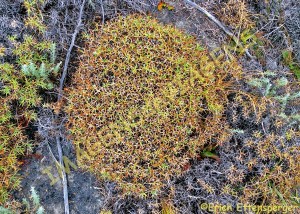
Tivemos a oportunidade de observar a flora local e ver rastros de animais, além de podermos apreciar a vista magnífica do Maciço Paine.

Erich e eu gostamos muito de voltar dos passeios e relaxarmos no spa, que oferece uma piscina interna, com vista maravilhosa para o MaciçoPaine e uma externa, além de sauna, aula de yoga, massagens, dentre outros tratamentos.
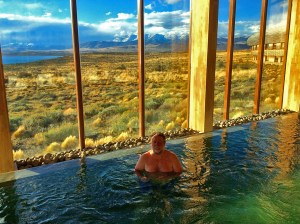
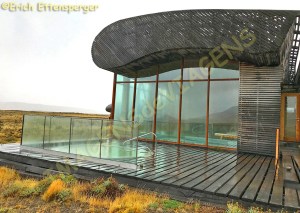
Um aspecto interessante que nos chamou à atenção e que mostra a valorização da cultura local foi o seguinte: quando a camareira preparava nossa cama no final do dia, ela sempre deixava junto a um chocolate, uma folha impressa com uma lenda de um dos povos que habitou a região. Eu sempre ficava ansiosa para saber qual seria a estória do dia, teve “A criação da terra, de acordo com o povo Tehuelche”, “Elal e a estrela”, “Kamshout e o outono”…
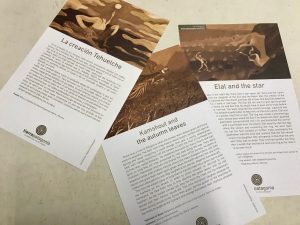
Em relação ao serviço de alimentação, o hotel oferece um grande e variado buffet no café da manhã. Os serviços de almoço e jantar são à la carte, com uma carta reduzida, com opções de alta qualidade que atendem a todos gostos, além de pratos muito bem apresentados e quantidade suficiente. Em relação às bebidas, a variedade é grande e a qualidade é excelente.



No que diz respeito aos funcionários, todos são simpáticos e muito prestativos. Mas, o que nos chamou mesmo a atenção foi o atendimento do gerente Nicholas Russ: um cavalheiro que faz com que você se sinta realmente em casa. Erich e eu já viajamos muito, porém, nunca vivenciamos uma situação em que o gerente de um hotel desse porte, recepciona os visitantes na sua chegada, na volta das excursões e se despede de todos! No dia da nossa partida, ele nos conduziu até ao veículo que nos transportou até Punta Arenas, nos apresentou ao motorista e de forma cordial e atenciosa, agradeceu nossa visita ao hotel.

Erich e eu ficamos particularmente impressionados, quando enquanto aguardávamos a nossa partida, o avistamos se despedindo de outro casal e nesse caso, até carregando uma mala de um hóspede, que não foi sensível o suficiente para impedi-lo dessa atitude.
O transfer até Punta Arenas durou 4 horas e meia, mais uma vez, o hotel preparou uma “lancheira” com água e sanduíche para nos abastecer durante a viagem. Mais uma vez, o motorista era simpático e prestativo nas informações.
Enfim, a nossa estadia no hotel nos proporcionou aquele sentimento de estar em um lugar que lhe conduz ao relaxamento, a apreciação da natureza, ao esquecimento de todas as preocupações do seu dia a dia, você realmente volta para casa renovado(a). Com certeza guardamos lembranças afetivas do Hotel Tierra Patagônia, da beleza estonteante do Parque Nacional Torres del Paine. Como forma de registrar nossa passagem pelo hotel e agradecer pelo acolhimento, entregamos ao Nicholas, exemplar do nosso livro 66 x Brasil para integrar a vasta e rica biblioteca do hotel.

Se quiser conhecer mais sobre o hotel Tierra Patagonia, clique aqui.
Observação: se você quiser continuar “viajando” com o nosso blog, clique no botão “seguir” localizado no canto inferior direito dessa página.

TIERRA PATAGONIA – EIN MAGISCHER ORT (TEIL II)
In diesem Blog-Post kommentieren wir die fünf Tage und vier Nächte, die wir dort im Hotel Tierra Patagônia verbracht haben, alles im All Inclusive System, darin eingeschlossen auch ein Teil unserer Ausflüge und auch die Transfers von Calafate zum Hotel und vom Hotel nach Punta Arenas, von wo aus wir dann unsere Reise nach Santiago fortsetzten.
UNSERE ERFAHRUNGEN IM HOTEL TERRA PATAGÔNIA
Unsere Erfahrung mit dem Tierra Patagonia Hotel begann in dem Moment, in welchem unser Hoteltransfer uns pünktlich im Hotel in Calafate abholte. Von da an kann ich sagen, dass unsere Sorgen vorbei waren und alles von einem erfahrenen Mitarbeiter des Hotels unterstützt wurde, dies gilt auch für den Grenzübertritt von Argentinien nach Chile. Die Entfernung zwischen Calafate in der Provinz Santa Cruz in Argentinien zum Hotel beträgt ca. 245 km. Wir verlieβen Calafate um 8:30 Uhr morgens und kamen gegen 13:30 Uhr im Hotel an.

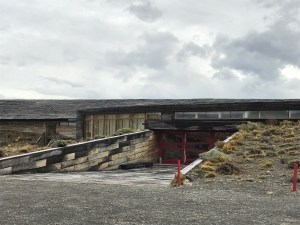
Die Rezeption war schnell und freundlich und wir wurden gebeten das Gästeblatt und ein Infoblatt für Verantwortlichkeiten zu unterschreiben, in welchem die Bedingungen für die Touren, die Risiken und Haftungsfragen der Gäste und des Hotels beschrieben wurden. Außerdem gab es eine kurze Präsentation des Hotels


gegeben zur allgemeinen Orientierung. Danach wurden einige Details in unserem Zimmer erklärt wurden und die Sorge des Hotels



um Nachhaltigkeit betont. Wir erhielten zwei metallische Flaschen, die wir während unserer Touren nutzen konnten und am Trinkbrunnen am Eingang des Hotels mit frischem Wasser füllen konnten.
Nachdem wir uns in unserem Zimmer eingerichtet hatten, machten wir uns auf den Weg zum Lobby-Aufenthaltsbereich, wo sich auch der Touren-Informations-Tisch befand, wo wir mit weiteren

Informationen über die vom Hotel angebotenen Touren und den drei von uns ausgewählten Ausflügen versorgt wurden. Wir wählten die halbtägige Tour zur Blauen Lagune und Umgebung,


die Ganztagestour, um das Paine Massiv zu sehen einschlieβlich einer Bootsfahrt auf dem Lake Grey zum Gletscher Grey

und schließlich den Wanderweg Paso de Agostini, auf dem wir viele Pflanzenarten und wunderschöne Landschaften in einem Waldgebiet des Nationalparkes Torre del Paine bewundern konnten.


Das Hotel bietet eine Vielzahl von Wandermöglichkeiten mit verschiedenen Schwierigkeitsgraden an wie z.B. der sogenannte “Base das Torres” Trail mit 18 km und einer Dauer von 7 bis 8 Stunden dauert, weiterhin sind z.B. Vögel beobachten, Reiten, Fahrradtouren, Kajak, Bootfahren, Eiswandern und vieles mehr im Angebot. Die Guides sind sehr gut ausgebildet und alles ist bestens organisiert.
Nachdem wir unsere Touren geplant hatten, verließen wir das Hotel und hatten somit unseren ersten Kontakt mit der örtlichen freien Natur. Wir folgten dem Weg, der uns zum Ufer des Lago Sarmiento führte. Wir hatten die Gelegenheit die lokale Flora zu beobachten


und auch Tierspuren zu sehen, außerdem konnten wir die herrliche Aussicht auf das Paine-Massiv genießen.

Erich und ich genossen es sehr, von den Spaziergängen zurückzukommen und uns im Spa des Hotels zu entspannen, welches ein Hallenbad mit wundervollem Blick auf das Paine-Massiv und den See bietet. Der Spa-Bereich offeriert Saunabereiche, Yogastunden, Massagen und andere Behandlungen.


Ein weiterer interessanter Aspekt, der unsere Aufmerksamkeit erregte und die Wertschätzung der lokalen Kultur zeigte, war folgender: Als das Zimmermädchen am Ende des Tages unser Bett vorbereitete, hinterließ sie immer eine kleine Schokolade mit einer alten Legende von einem der ehemaligen Völker dieser Region. Ich war immer bestrebt zu wissen, was die Geschichte des Tages war wie “Die Erschaffung der Erde gemäβ dem Tehuelche Volk”, “Elal und der Stern”, “Kamshout und Herbst” …

In Bezug auf den gastronomischen Service bietet das Hotel ein großes und abwechslungsreiches Buffet zum Frühstück an. Der Mittag- und Abendessen-Service ist a la carte mit einer reduzierten Speisekarte, jedoch mit hochwertigen Optionen, die für jeden Geschmack etwas bereithalten, sowohl Quantität als auch die visuelle Präsentation sind hervorragend. Auch bei den Getränken ist die Auswahl groß (Weine) und die Qualität ausgezeichnet.



Was das Personal angeht, alle sind sehr freundlich und sehr hilfsbereit. Aber was unsere Aufmerksamkeit wirklich besonders erregt hat, war der anwesende Manager Nicholas Russ: ein Gentleman, der dafür sorgt, dass Sie sich wirklich wie zu Hause fühlen. Erich und ich sind viel gereist, jedoch haben wir noch nie erlebt, dass der Manager eines Hotels dieser Größe die Besucher bei ihrer Ankunft oder bei der Rückkehr von Exkursionen begrüßt und sich am Ende von allen verabschiedet!
Am Tag unserer Abreise brachte er uns zu dem Fahrzeug, das uns nach Punta Arenas brachte, stellte uns den Fahrer vor und bedankte sich herzlich und aufmerksam für unseren Besuch im Hotel.

Erich und ich waren besonders beeindruckt, als wir, während wir auf unsere Abfahrt warteten, sahen, wie er sich von einem anderen Paar verabschiedete und in diesem Fall sogar einen Koffer dieses Gast trug, welcher jedoch nicht sensibel genug war, ihn daran zu hindern.
Der Transfer nach Punta Arenas dauerte 4 1/2 Stunden, das Hotel versorgte uns wieder mit einer “Lunch Box”, Wasser und ein Sandwich enthaltend. Auch hier war der Fahrer wieder sehr freundlich und informativ.
Wie auch immer, unser Aufenthalt im Hotel vermittelte uns das Gefühl, fernab von der restlichen Welt zu sein, an einem Ort, der zur Entspannung, zur Wertschätzung der Natur, zum Vergessen der Alltagssorgen einlädt und einen wie „runderneuert“ nach Hause kommen lässt.
Wir behalten ganz sicherlich liebevolle Erinnerungen an das Tierra Patagonia Hotel und die atemberaubende Schönheit des Nationalparks Torres del Paine.
Um quasi unseren Aufenthalt im Hotel zu dokumentieren und uns für alles zu bedanken, überreichten wir Nicholas unser Buch 66 x Brasilien, um es in die groβe und reichhaltige Bibliothek des Hotels zu integrieren.

Wenn Sie mehr über das Tierra Patagonia Hotel erfahren möchten, klicken Sie hier.
Hinweis: Falls Sie unseren “Seguir” auf dem Blog folgen wollen, dann klicken Sie unten rechts einfach auf “Weiter”, Sie werden dann zukünftig automatisch informiert.

TIERRA PATAGONIA – A MAGICAL PLACE (PART II)
In this blog post we comment on the five days and four nights that we spent there in the Hotel Tierra Patagônia, all in the All Inclusive system including some of our excursions and transfers from Calafate to the hotel and from the hotel to Punta Arenas, from where we then continued our journey to Santiago.
OUR EXPERIENCES AT HOTEL TERRA PATAGÔNIA
Our experience with the Tierra Patagonia Hotel began the moment our hotel transfer picked us up on time at the hotel in Calafate. From then on I can say that our worries were over and everything was supported by an experienced hotel staff member, including the border crossing from Argentina to Chile. The distance between Calafate in the province of Santa Cruz in Argentina to the hotel is approximately 245 km. We left Calafate at 8:30 in the morning and arrived at the hotel around 13:30.


The Check-In at the hotel was quick and friendly and we were asked to sign the guest sheet and an information sheet describing the conditions for the tours, the risks and liability issues of the guests and the hotel. We were given also a brief presentation about the


hotel as general orientation. After that also some details were explained in our room and the concern of the hotel



for sustainability was emphasized. We received two metallic bottles which we could use during our tours and to fill them with fresh water at the drinking fountain at the entrance of the hotel.
After settling into our room we made our way to the lobby lounge area where is located also the tour information table where we

were provided with more information about the tours offered by the hotel and the three excursions we had selected. We chose the half day tour to the Blue Lagoon and surrounding area,


the full day tour to see the Paine massif including a boat ride on Lake Gray to the Gray Glacier

and finally the Paso de Agostini trail, where we could see many plant species and beautiful landscapes in a wooded area of the National Park Torre del Paine.


The hotel offers a variety of hiking opportunities with different levels of difficulty such as the so-called “base the Torres” trail with 18 km and a duration of 7 to 8 hours and other activities such as bird watching, horseback riding, bike rides, kayaking, boating, ice hiking among others.The guides are all very well trained and everything is well organized.
After having planned our tours we left the hotel and we made our first physical experience with the local nature. We followed the path that led us to the shores of Lake Sarmiento. We had the opportunity


to observe the local flora and also to see animal tracks, as well as enjoying the magnificent view of the Paine massif.

Erich and I really enjoyed it coming back from the walks and excursions and then relaxing in the hotel’s spa, which offers an indoor pool with wonderful views of the Paine Massif and the lake. The spa area offers too sauna areas, yoga classes, massages and other treatments.


Another interesting aspect that caught our attention and showed the appreciation of the local culture was this: When the maid prepared our bed at the end of the day, she always left a small chocolate with an old legend of one of the former peoples of this region. I have always striven to know what the story of the day was like “The Creation of the Earth according to the Tehuelche People”, “Elal and the Star”, “Kamshout and Autumn”…

In terms of gastronomic service the hotel offers a large and varied breakfast buffet. The lunch and dinner service is a la carte with a reduced menu, but with high quality options catering for every taste, both quantity and visual presentation are outstanding. Also with the drinks the choice is great (wines) and the quality excellent.



As far as the staff are concerned they are all very friendly and very helpful. But what really caught our attention was the presence of manager Nicholas Russ: a gentleman who makes you feel right at home. Erich and I have traveled extensively but we have never seen the manager of a hotel of this size greeting the visitors on their arrival or return from field trips and saying goodbye to everyone at the end!
On the day of our departure he brought us to the vehicle that brought us to Punta Arenas, he introduced us to the driver and thanked us warmly and attentively for our visit to the hotel.

Erich and I were particularly impressed as we waited for our departure to see him saying goodbye to another couple, in which case he even carried a suitcase of a guest, who (the guest) was not sensitive enough to avoid this.
The transfer to Punta Arenas took 4 1/2 hours and the hotel provided us again with a “lunch box” containing water and a sandwich. Again, the driver was very friendly and informative.
Finally our stay at the hotel gave us the feeling of being far away from the rest of the world, in a place that invites you to relax, appreciate nature, forget about everyday worries, and get home like a “retouch”.
We certainly have loving memories of the Tierra Patagonia Hotel and the breathtaking beauty of the Torres del Paine National Park.
To virtually document our stay at the hotel and to thank for everything we presented Nicholas our book 66 x Brazil to integrate it into the hotel’s large and lavish library.

If you would like to know more about the Tierra Patagonia hotel, click here.
Note: If you want to follow our “Travels” on the blog, simply click on “Seguir” in the lower right corner, you will be then automatically informed in the future.





















































































